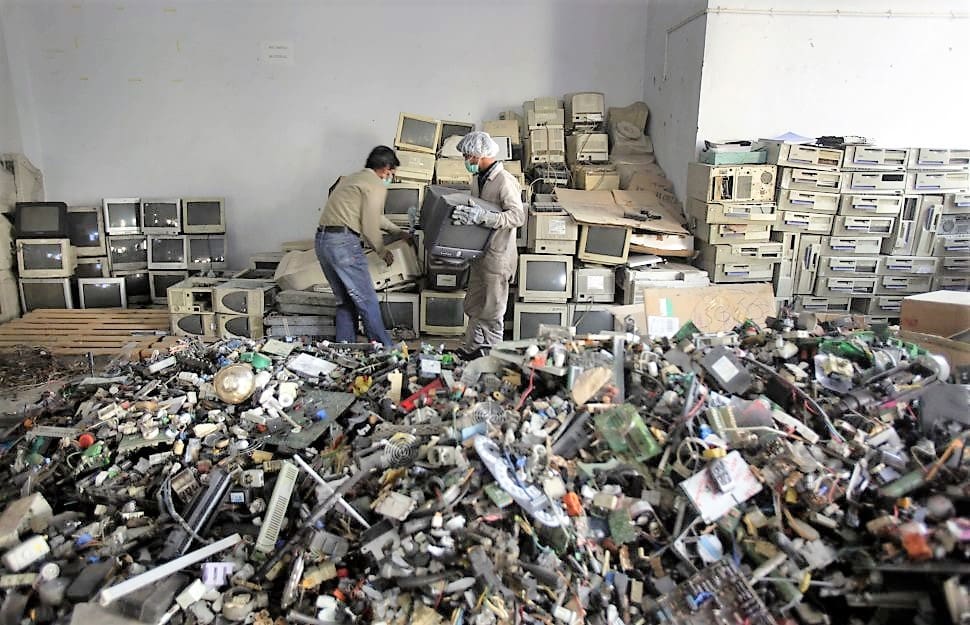Present Scenario of E-waste Recycling in India
Present Scenario of E-waste Recycling in India –
90-95% e-waste recycling in non-formal sector
PCBs are treated in primitive methods to remove components & value metals
Burning cables to recover copper & unwanted materials in open air
Leaching of heavy metals/ chemicals into landfills and incinerator hazardous
Recovery yield is poor (~10-20%)- loosing precious metals
5-10% e-waste is recycled in formal sector
• Segregating, disassembling to recover: structural metal parts, cables, Printed Circuit Board (PCB), glass components etc.
• Limited PCB treatment or Exported them for further process to recover precious metals Non-formal sector Formal sector
Recovered Items Recycling Option Used
- Small & large structural metal parts, heat sinks, Ferrous metal
- Ferrite & ceramic components Non ferrous metal scrap mainly Cu & Al
- Glass components
Dismantling, Segregation,
Smelting – Available with local smelters
Recovered materials can be sold at market price - Precious metal scrap, PCBs with IC Chips, electronic components and connectors
Exported/ High end imported
Technology Required _
Indigenous technology
developed: Smelting + Hydrometallurgy + Electro-chemical Process
High value extracted Precious metals can be sold - Small & large structural plastic parts, flame retardants plastic
- Cables and wires low value/ dealt in informal sector
Indigenous Technology Developed
Value added master batch made high value extracted metals - Hazardous wastes like CFC, Mercury (Hg) Switches, CRT, and capacitor
Indigenous Technology Developed
Extracted metals to be sold to market - Hazardous wastes like batteries specially Lithium ion
High end imported Technology Required
Indigenous technology developed:
High value extracted Precious metals can be sold
Precious Metals Plastics Hazardous waste Structural parts
Potential Materials Recover
A complete report by –
Dr. Sandip Chatterjee (Director)
Ministry of Electronics Information Technology
Government of India
sandip@meity.gov.in

